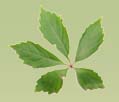
Poetry Prose and Other Words
by Ken Ingham
home
- poems - essays
- autobio - retroblog
music - reading - other - Gaia
Book Review
Verse & Universe: Poems about Science and Mathematics
edited by Kurt Brown, Milkweed Publications, 1998
In this anthology, 80 contemporary American poets react with the right sides of their brains to some of the knowledge generated by the left sides of those of their counterparts across the abyss. Science and Mathematics (S&M) has produced some dazzling conclusions about the nature of the universe. But you don’t have to be one of them to be awed by black holes or double twists of DNA or the fact that your own body, like the rest of the universe, is mostly empty space . . and for an instant, the terror of flying apart rushes through me like a close call on the interstate (Alison Hawthorne Demming), or to be skeptical about their outrageous claim that . . everything came from the same infinitesimal seed, about the size they say, of the dot at the end of this sentence (Dinah Berland), or to be able to picture the universe expanding . . like the pores of Dizzy Gillespie’s cheeks when he blew his horn (John Sokol).
The more than 250 poems in this collection illustrate how the dimensions of artistic perception have expanded as science reveals underlying and overlaying beauty, invisible to the naked eye but increasingly amenable to anyone willing to peer thorough a scope or merely read a newspaper, as did Nancy Kassel, who took a NY Times article about embryology as the inspiration for her poem Architecture. Scientists themselves are as apt to first learn of a breakthrough by reading the Post as by reading academic journals. And, as this volume shows, the language of S&M is rich with metaphoric potential, words and sounds that in the context of a poem become even more evocative . . Its an injustice that only neuro-doctors get to say these words (Thomas Lux). And now, S&M has given us computer graphics, as if . . to prove its theory with a work of art (Maura Stanton).
Most of these poems are not “about” but rather “inspired” by S&M. A few wander so far from these subjects that I wonder why they were included. Others keep to the point and offer many lessons. I didn’t know for example that the species identity of a spider can be inferred from the uniqueness of its web no matter where its built . . it is wonderful how things work: I will tell you about it because it is interesting (A. R. Ammons), or that the function of the pineal gland remained obscure . . til Aaron Lerner, awash in kilos of bovine pineals, extracted melatonin . . a hormone that did bleach tadpoles (Roald Hoffman). Rather than be educated, you might be titillated as was I by escapades recalled in Gloria Vando’s depiction of a planetary nebula . . pulsating red giant with a small hot companion. In Facing my Amygdala, Denise Duhamel elaborates an intimate list of personal fears as she imagines examining that part of her brain where they reside . . . so crowded they pile on top of each other. Pattiann Rogers, in Rights of Passage, takes us through the steps of frog embryogenesis, telling in her distinctive voice how . . the growing blastula turns itself inside out unassisted and becomes a gut . . even as . . the sound of the Heron jerks across the lake. There is gravity, the way it keeps everybody close to the ground (Tim Seibles), Newton’s apple . . still falling . . lawfully . . and wasn’t that one of her prize worms we saw crawling off into the unthinkable? (Charles Simic), as well as levity . . imagine squatting in the wasteland of Pluto, all five tons of you, or wandering around Mercury wondering what to do with your ounce (Billy Collins). And poor number zero . . . . born to live a life of emptiness, only child of plus and minus (Sue Owen).
Understanding these poems, like the subjects they address, requires effort. I found the experience gratifying and was left with the impression that the cultural gap between science and art may be narrowing. But if TRUTH is defined as the absence of unanswered questions, we have far to go. For it seems that every question answered by our left lobes only generates new ones on our right. Verse and Universe represents an attempt at collaboration between the two.
This invited review appeared in 1999 in
The Audubon Naturalist where the byline read: reviewer Ken Ingham
would be a poet if not already a scientist
(with degrees in math & chem)